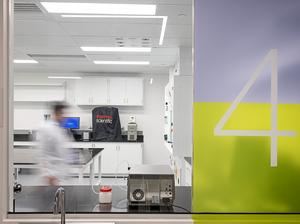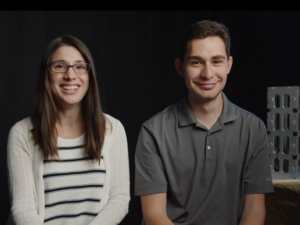To date, about $1,761,252,283 has been pledged to Kickstarter, accounting for more than 85,000 successfully funded projects across all categories, from tech to food, journalism to design. Since its founding in 2009, the prevailing crowdfunding platform has seen about 8,775,000 total backers, nearly a third of whom pledge money to more than one campaign.
It can be an immensely powerful catalyst to launch a business. But not all Kickstarter projects are successful. Perhaps paradoxically, music, theater, dance, comics and art are the five categories with the highest success rates. (Dance is tops at 64.71 percent.) Technology, on the other hand, has the lowest success rate at 21.25 percent.
"Energy and passion are great but it's critical to have quality guidance."
A close second: fashion.
This publication, and me, in particular, has written about a ton of Kickstarter campaigns, the vast majority of which hit their goal, often in record time. Boston has born many notable companies that got their start crowdfunding in this way, including Ministry of Supply, BlueSmart and Boston Boot Company, to name a few I've covered.
Recently, though, I wrote about one that didn't hit its goal. The company is Thirst, and as I mentioned in my article, I'd been following founder Sam Winslow for years, since he first pitched the idea to me over coffee. A fashion company that makes retro-inspired, performance windbreakers for men and women, Thirst launched on May 5 with a 19-day campaign hoping to raise $30,000.
On May 25, the campaign closed with $10,886 pledged.
To say this campaign "failed" is somewhat misleading. True, it didn't hit its goal. But what if that goal had been lower to begin with? What if the video was different or Sam had offered the products in different colorways? As much as we laud successful campaigns, there are lessons to be learned from those that don't make the cut.
Sam agreed, and was gracious enough to answer some questions about his experience. Here, a condensed version of our conversation.
AW: In retrospect, what would you have changed? The goal, the campaign duration, the video ... what stands out?
SW: There's no question about it–the goal was too high. I was overly liberal with the few production details that I couldn't get a hard grasp on. I try to always remain calculated, and even now I can see that I overshot my unknown variables. The good news is that I think I'll be able to really slash that figure looking forward.
What were some of the unknown variables?
For my situation, the tooling and development costs are not completely certain, but they shouldn't be outrageous. After my time in footwear, I was a bit intimidated by the potential cost of this process, when in reality, it's a completely different situation.
The second unknown variable is more sizable: fabrics. The true final cost won't be known until purchases are made, based on market rate and volume. It has a major impact on the overall cost of each unit, and since I couldn't nail down an absolutely certain figure, I shot high.
Why do you think the campaign came up short?
Momentum is crucial, and general consumer psychology certainly applies to crowdfunding campaigns. Had I been able to make a $5k goal, I'd have raised it in the first day, and the total pledge amount would have ultimately been much higher.
So, you're saying the total pledge amount would have been higher had the total goal been lower?
There is a great deal of added value in reaching the funding goal early. It removes a layer of the vulnerability around the campaign, serving as a form of affirmation that it has been bought in to, and verified by others.
The most comprehensive example I can think of is when something goes viral on the Internet. I can't tell you how many times I'll see something on Reddit, and then on a website like BuzzFeed within 48 hours. This is because, many times, websites like BuzzFeed aren't the original discoverers of stories. By the time it's on BuzzFeed, it has been verified by finding success within smaller sampling audiences. They help bring things to the world: If it's "buzzing" they "feed" it to everyone.
For Thirst, this concept has the most value when considering press, due to their influence. It needs to organically make its way through this process in order to have the impact that I believe it's capable of having.
What does the layman not know about launching a Kickstarter? What did you not know that you know now?
Guidance from seasoned veterans is crucial. Two good friends of mine have both had substantial Kickstarter campaigns, and they have been hugely supportive (and still are). Without them I wouldn't have had a shot in the dark, nor a clue what needs re-calibrating looking forward. Energy and passion are great but it's critical to have quality guidance, both with Kickstarter campaigns and life in general.
Also, I really didn't know that I'd receive so much support from friends than I did. That support did huge things, and if I had executed the way I plan to next time, the impact would have been magnitudes greater.
What are the vital pieces you'd tweak if you did it again?
I'm absolutely doing it again. I need to get that goal down, and I need to iterate on my windbreaker to some capacity. Thirst simply needs to be a homerun of a writeup for press outlets. Over the years, I've found much inspiration from a collection of websites, zines and bloggers. I want to give back by showing them that they've actually played a small role in the creation of this product, and bringing them something they'd be excited to share with their audiences.
How do you plan to iterate on the product?
I believe in the Thirst Windbreaker as much as ever, but this is the area where I still have a lot of reflection and analysis to do. I've already done a survey, and the most response I've had around the windbreaker is with regards to the offered colorways. I may end up swapping out the neon option for something else, and I'm also considering incorporating print screening, so the product can have a cool and unique vibe without being too aesthetically noisy.
Anything I've missed?
When it comes to stuff like this, it shouldn't phase you if things don't come together perfectly your first time around. I've only learned from the campaign, and it's not like I now get punished because it isn't funded. No forty lashings await me, and there's no Kickstarter University that I now don't get admission to. Ryan Grepper is a great example, as his campaign for The Coolest failed twice before raising $13M.
Maybe it's just me, but I'm not having a hard time making lemonade. It's a privilege to have the opportunity to work towards a meaningful goal, and I have been able to do so in the company and guidance of great people. Plus, it doesn't hurt to know that I'm going to be back in a few months with an even better campaign.
For more on Thirst's initial campaign, see below:








